1970 Chevrolet El Camino SS 396 factory 4 speed!
1970 Chevrolet El Camino for sale in Spanaway, Washington, United States
| Condition: | Used |
| Item location: | Spanaway, Washington, United States |
| Make: | Chevrolet |
| Model: | El Camino |
| SubModel: | SS 396 |
| Year: | 1970 |
| Mileage: | 58,761 |
| Color: | Red |
| Number of cylinders: | 8 |
| Transmission: | Manual |
| Interior color: | Tan |
| Vehicle Title: | Clear |
| Want to buy? | Contact seller! |
Description for Chevrolet El Camino 1970
1970 SS 396 4-speed El Camino. All original drivetrain. Factory Cranberry red SS with black vinyl top and saddle interior! Runs and Drives. Needs interior, paint, and finishing.This is not a clone, tribute, replica or "born as" SS 396. This is the real deal. Date coded and numbers matching original 350 horse 396 motor, factory muncie M-21 close ratio 4 speed transmission, and original 12-bolt 3.31 posi traction rear differential. In addition the SS is equipped with disc brakes and tach and gauges.
The El Camino runs, drives, turns, and stops. The motor has less than 5 miles on a professional rebuild. The SS has been off the road since 1997.
The overwhelming majority of 1970 SS chevelle and El Caminos were equipped with automatic transmissions. It's quite difficult to find a factory 4 speed car. In additional it's extremely hard to find one with all of the original drive train still in intact. They almost always have a motor out of a 74 caprice or a transmission out of a 77 camaro because the originals were blown up long ago.
Vin Decode:136800L2078391 = Chevrolet Division36 = Custom El Camino V880 = 2dr sedan pickup0 = 1970L = Van Nuys California Assembly plant207839 = Sequential number
Cowl Tag Decode:ST 70-13680 BL 07689 BDYTR 770 75 B PNT07C 080207 160079
70 = 197013680 = Chevrolet El Camino custom 2 dr sedan pickupBL = Van Nuys California Assembly plant
TR = Trim770 = Saddle bench seat interior75 = Cranberry Red exteriorB = Black vinyl topPNT = Paint
07C = built 3rd week of July 1970 (very late 1970 production. One of the last 100 cars built in Van Nuys for the 1970 model year)
You cannot verify an SS via the Vin or cowl tag in 1970 (unless it was built in Canada). They need to be verified by other means. Read on for verification!
Note this is a 3 tone color combination. The exterior is the very desirable Cranberry red paint code 75 with a black vinyl top and Saddle interior. Red with tan interior is what you normally find on BMWs and Ferraris, not GM cars of this era. Very rare color combination. This is not some hideous shade of Green with green interior.
The 396 motors in 1970 are actually 402s although Chevrolet continued to call them SS 396s. The driver's side rear of the block is cast 3969854 which is a 396/402 manufactured from late 1969 through 1972. Ours is a 1970 and a 396 so that checks out. The passenger side rear of the block is cast "E12 70" which means the block was cast May 12th 1970.
The front Passenger side of the block behind the alternator is stamped T0707 CTX P686 (see pics).T = Tonawanda engine assembly plant0707 = July 7th assembly date (1970)CTX = 350 horse 396/402 equipped with a manual transmission equipped in a Chevelle, El Camino, Camaro, or Nova only. The "CTX" is what normally people rear to as the engine code. CTX is only used in the 1970 model year. it only comes in front of a manual 4 speed muncie transmission and could only be equipped in the vehicles listed above.
Often the vechile vin is also stamped on the same pad on the front passenger side of the motor next to the usage code. On SS vechiles built in the Van Nuys California plant the Vins were often stamped instead of the driver's side of the block near the oil filter. That part of the motor is rough cast instead of machined. It's often very difficult if not impossible to read the numbers because of the rough casting area. I can just barely make out the numbers "7839" stamped there. The last 6 digits of the Vin should actually be stamped there, but I only see four. If the motor was out of the vehicle I could check more closely, but with the motor in the SS and the 4 speed linkage in the way it's very difficult to read. Nevertheless having the last 4 of the sequential number stamped there ties the motor to our El Camino.
The heads are both cast 3964290 which are used in 1969 and 1970 396/402/454 only. Thus they are correct for our application. There are aftermarket aluminum roller rockers on the motor currently. They do not fit under the stock valve covers thus the 396 is wearing aftermarket ones. I do have all of the original rocker arms in a sealed bag and I do have the original chrome valve covers that come with the vehicle.
The Intake manifold is cast 3955287 which is used on 1970-71 396/402/454 only making it correct for our SS. The intake is also cast "E170" meaning the intake was cast on May 1st 1970.
The exhaust manifolds were thrown in the trash long ago in favor of period correct headers. The carb and distributor are brand new. Neither has the correct numbers sadly. I suspect the previous owner took in his old carb and distributor as core returns when he bought the replacements.
The SS is equipped with power disc brakes (standard on 1970 SS models) but is equipped with manual steering! The "rag joints" on the steering columns differ on big block and small block cars. The El Camino has the correct bolted on rag joint found on an SS instead of the pressed on rag joint normally found in small block cars (see pics of steering box). Thus we have the correct steering shaft for an SS.
The transmission is an aluminum case Muncie 4 speed (as opposed to a cast iron case saginaw transmission). The body of the case is cast 3925661 which is for muncie 4 speed 1970-74. Thus it is the correct vintage case for a 1970 SS.
The small tag affixed to the driver's side of the transmission (see pics) is stamped 3968011Wl which decodes to 1970 muncie 4 speed M21 (close ratio).
On the passenger side of the transmission case we see 2 sequences stamped. The first is POH18B. This decodes as follows:P = muncie0 = 1970H = build month. H is used for June18 = build dayB = M21 close ratio. A is for M20 wide ratio, and C is for M22.
Thus our transmission was manufactured on June 18th 1970 just a couple weeks before the rest of the car was assembled.
The last sequence is 10L207839. You might recognize this number as it matches our Vin number. This is what people mean when they say "numbers matching transmission." From the above information we can definitively link this transmission to our car.
You could order a chevelle or El Camino with a variety of motors in 1970 including the 250 6 cylinder, the 307 and 350 small block v8s, and of course the 396 and 454 big block v8s.
Of special note are the available transmissions with these motors. You could order a cast iron case saginaw manual transmission with the 6 cylinder motor, but you could not order any muncie (M20/21/22).
With the 307 and 350 motors, you could order either a cast iron saginaw or a muncie 4 speed, but you could only order the M20 wide ratio with these engines. The M21 and M22 close ratios were not available. Also with the 454 engines you got exactly the M22 muncie transmission when ordering a 4 speed.
Thus the only available engine that could be ordered with an El Camino in 1970 is exactly an SS 396. Even the lower horsepower Non-SS LS3 engine could not be ordered with the M21 close ratio transmission.
Why is all this important? We know this Elco was equipped with an M21 and the only motor you could order it with is exactly the SS 396 motor. This is yet another way to document this as a true SS 396 4 speed car and not a clone.
Please note from the pics that the SS still has the correct speedometer cable adapter on it from the factory.
On to the rear end! The rear differentials on the SS vehicles are also date and application coded. Our 12-bolt diff is stamped on the passenger axle tube CCF1208B1. This decodes as follows:CCF = 3.31 gear ratio with posi traction. Moreover this code was only used in vehicles equipped with 396 motors. Small block cars and 454 cars get a different 3 letter code even when they have the same 3.31 posi traction differential.
1208 = build date. This rear end was built the 208th day of the year (meaning built in july 1970).B = Buffalo assembly plant1 = first shift
In 1970 3.31 ratio is the standard ratio in an SS 396 car. Not only does the Elco have the correct 12 bolt rear end, it also has the correct 3.31 ratio and correct usage code stamped on the axle tube. Also of importance is that this rear end was built in July 1970.
Putting all the build dates together we know the body was built 3rd week of July 1970. The Block and intake were also built in the first half of 1970. The Motor was assembled July 7th 1970. The Transmission was assembled June 18, 1970. The rear end was built July 1970.
This is exactly what you are looking for on a correct car. The components were built shortly before final assembly of the complete car. Everything checks out.
The SS is also equipped with tach and gauges. The gauges come with 3 different red lines depending on which motor the car was equipped with. Small block cars get a 5000rpm red line on the tach. The 396 and LS5 cars have a 5500rpm red line. Finally the LS6 cars get a 6500rpm redline. The SS has the correct 5500rpm redline tach.
The dash is uncut. It still has the original AM radio in the dash.
You can see via the pics that the Elco has the correct 4-speed "hump" in the car with the 47 year old seem sealer still covering it. The floors are rock solid in the Elco. They often have rust issues in the bottom of the cubby hole behind the driver's side of the front seat. This does not.
The doors shut nice. They do not have rust issues. The quarters are super straight and free from rust. The door glass and wing windows are out, but they are included with the vehicle. There is a bench seat in the El Camino, but it is not the original seat. The seat is in very poor condition. I would not use it. I would find another el camino with a nice bench seat (meaning it has good springs and works correct) and then recover that seat with the correct saddle upholstery.
The elco needs basically all of the interior. It has the original dash, and dash pad but that's about it. The previous owner was going to convert the Elco to black interior and he painted the original dash pad black. You can clearly see the saddle underneath. The dash pad is no cracked.
The body is very solid. It does not need any rust repair. The body is also very straight. I can see the factory red paint over spray on the insides of the doors thus i'm confident they are original. As far as I can tell all of the bed sheet metal is also original. I believe both front fenders are off another car. I say this because neither has any holes for SS emblems. I inspected the rear sides of both fenders and I see no evidence either fender has ever had "El Camino" "SS" or "396" emblems attached. The fenders are nice and straight and do not have rust issues. Again in order to be complete I do not believe they are original to the car.
There was no hood with the El Camino when I got the car. I cannot say for certain whether the SS is a factory cowl induction car, but I do not think it was. There are a number of subtle things missing that would be there if it had factory cowl induction. Nevertheless it would have an SS hood since it's an SS. The car does not come with a hood.
The bumpbers are off, but I do have them. I have the front headlight housings and chrome bezels. I have some, but not all of the SS badges. I believe all of the original trim is there and comes with the car. It's currently sitting in the bed.
Again the elco fires right up and will drive but it not road worthy since the bumpers, tail lights, seat belts, windows are all removed (they all come with the car). With minor assembly and tinkering it could be road worthy.
The tires are basically rollers at this point. They hold air, but I would not drive the vehicle any distance due to their age. It has 15" wheels on it, but it really needs correct 14" SS rally wheels to be correct.
The market is flooded with SS clones. People bolt on a cowl hood and some SS emblems on almost any Chevelle or El Camino these days and try to pass it off as an original. Unless they have some documentation to back it up those cars are just clones. It might not seem like a big deal if you buy a clone, but it will become apparent how much that hurts the value of the car if you ever decide to sell it.
It makes sense to start with the rarest car possible as those are the ones that make the best long term investments and are the most fun to drive!
Prospective buyers are welcome and encouraged to come inspect the El Camino before bidding. I've done my very best to describe the SS as accurately as possible, but there's no substitute to looking at it in person. The car is located approx. 1 hour south of Seattle. Please be certain you are happy with the car and condition before bidding. Returns are not possible. Price adjustments will not be made after the fact. Once you own the car it's yours. Buyer responsible for shipping.
I am available via phone (253) 948-7756 to answer questions about the El Camino. The SS has clear Washington state title. The chevy has a reasonable reserve commensurate to the rarity of the vehicle. Acceptable payment methods are cash or wire transfer only. No paypal or checks accepted.
Thanks for viewing!
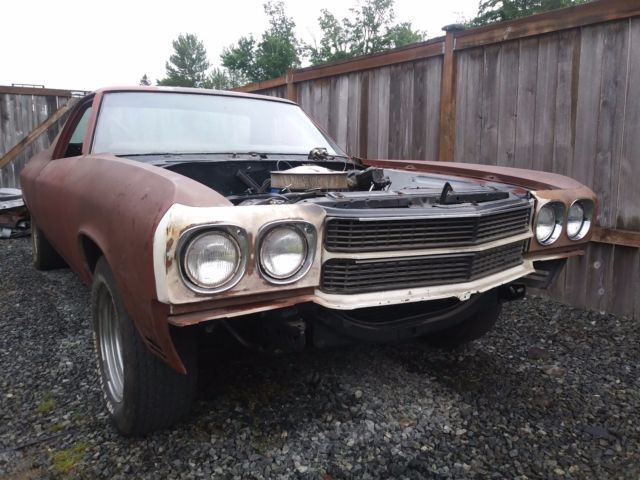
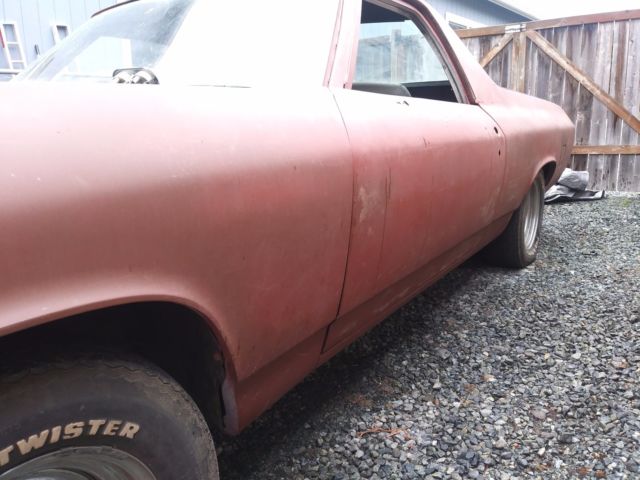
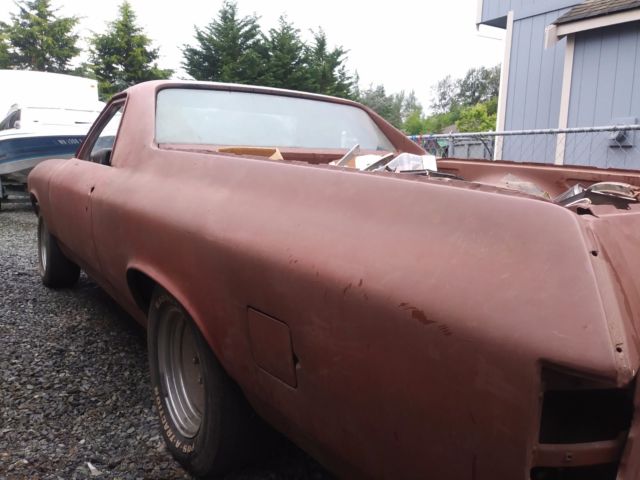
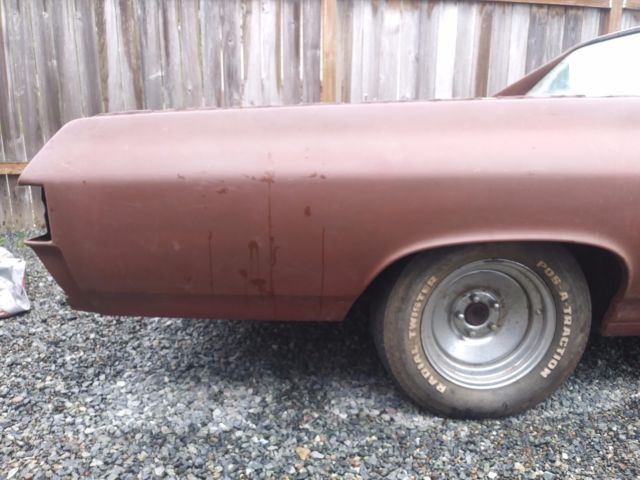

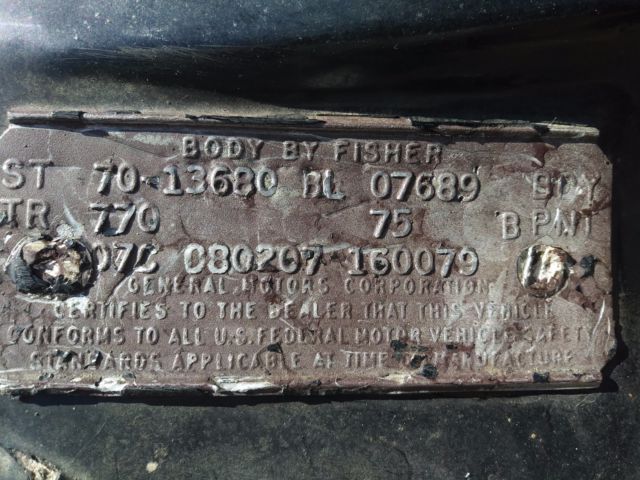
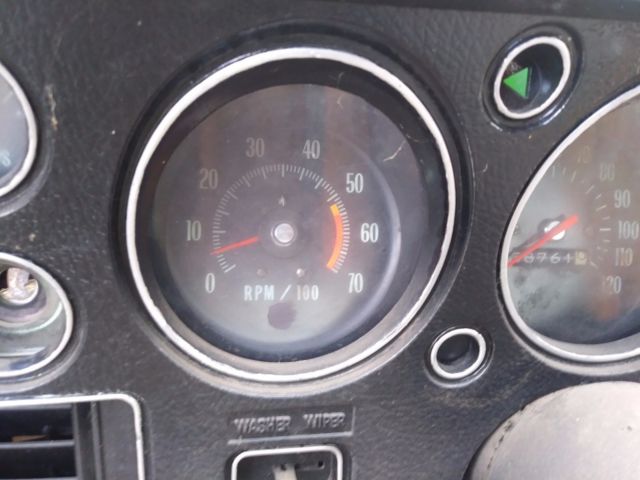




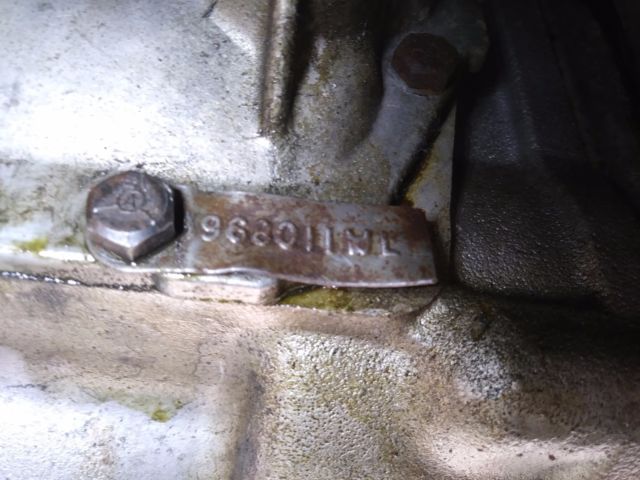
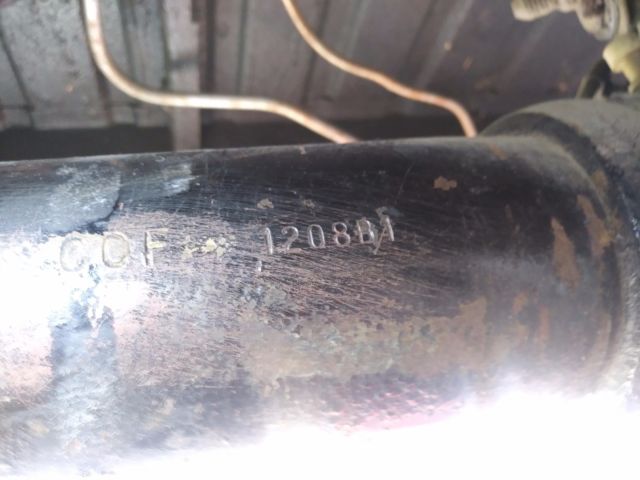
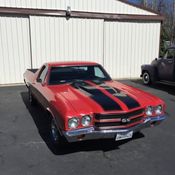 1970 EL CAMINO SS396 FACTORY 4 SPEED WITH A/C..CHEVELLE,CAMARO,IMPALA,BELAIR
1970 EL CAMINO SS396 FACTORY 4 SPEED WITH A/C..CHEVELLE,CAMARO,IMPALA,BELAIR
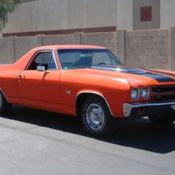 1970 Chevrolet El Camino Factory A/C Arizona Car..!! Make Offer..!!
1970 Chevrolet El Camino Factory A/C Arizona Car..!! Make Offer..!!
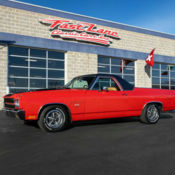 1970 Chevrolet El Camino SS396 Numbers Matching Big Block Factory Air Condition
1970 Chevrolet El Camino SS396 Numbers Matching Big Block Factory Air Condition
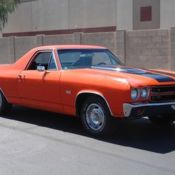 1970 Chevrolet EL Camino Factory A/C.. Rust Free Arizona Car..!! MAKE OFFER..!!
1970 Chevrolet EL Camino Factory A/C.. Rust Free Arizona Car..!! MAKE OFFER..!!
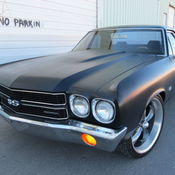 1970 Chevrolet Chevelle ss El camino Tribute 4 speed Hot Rod, 1970 1972,1969,
1970 Chevrolet Chevelle ss El camino Tribute 4 speed Hot Rod, 1970 1972,1969,
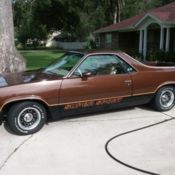 1979 Chevrolet El Camino SS w/factory 4-speed & posi
1979 Chevrolet El Camino SS w/factory 4-speed & posi
 1969 Chevrolet SS 396 El Camino - 4 Speed and Factory Air Conditioning
1969 Chevrolet SS 396 El Camino - 4 Speed and Factory Air Conditioning
 1972 Chevrolet El Camino - Matching #'s L48 350 V8 4 - Speed With Factory A/C
1972 Chevrolet El Camino - Matching #'s L48 350 V8 4 - Speed With Factory A/C